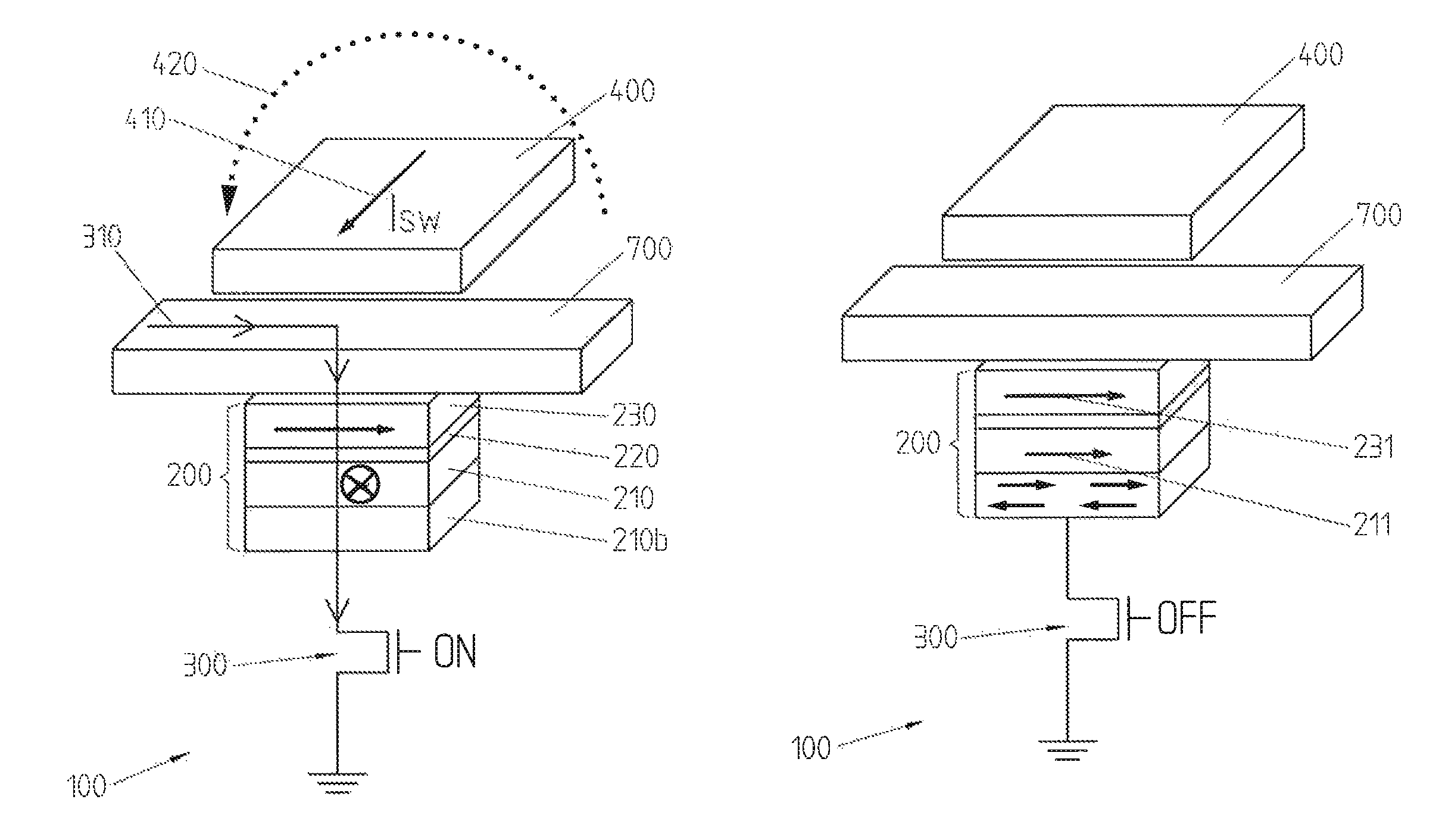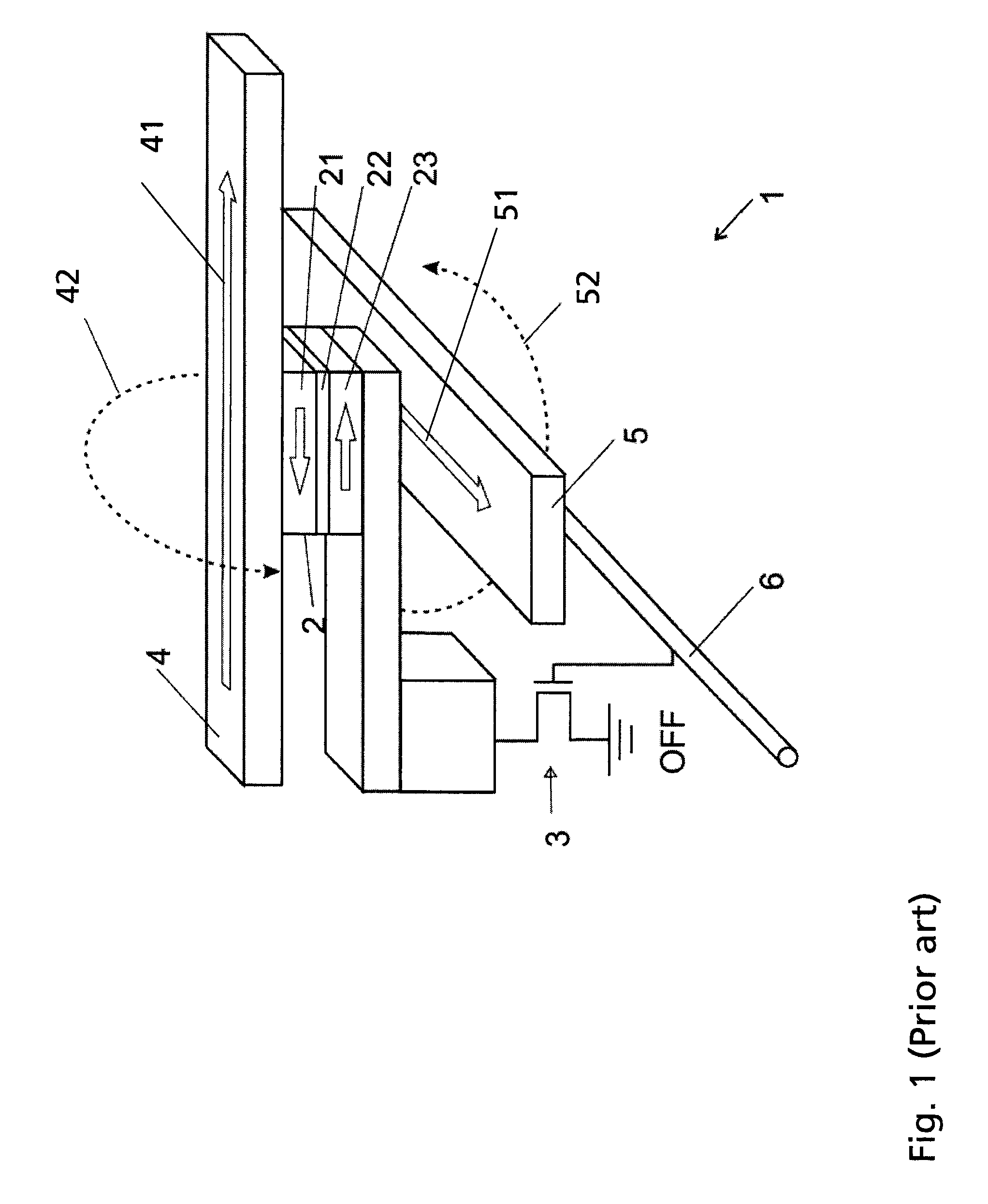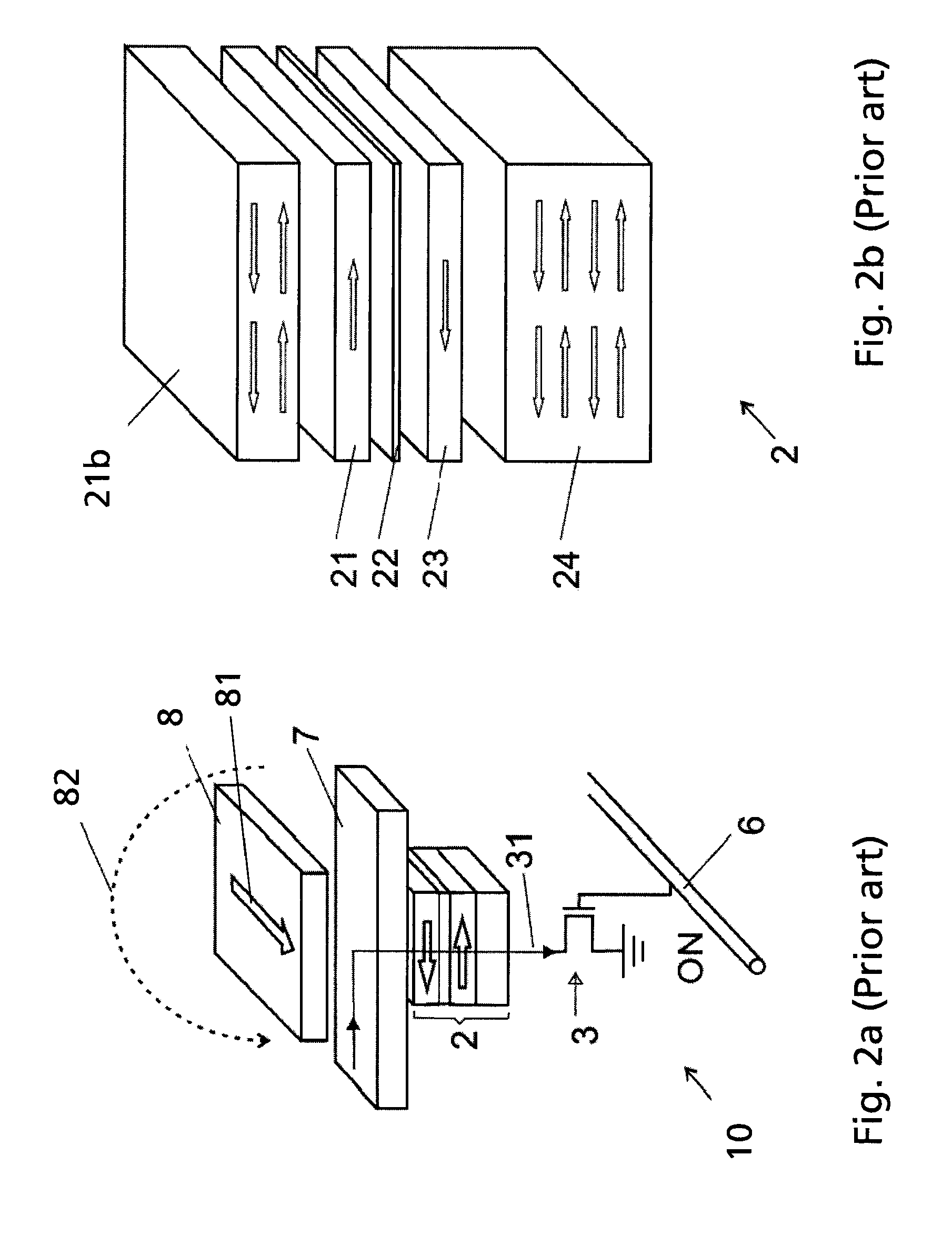Magnetic memory with a thermally assisted writing procedure and reduced writing field
a writing procedure and magnetic memory technology, applied in the field of magnetic memories, can solve the problems of high power consumption of tas-mram cells, inability to meet low power consumption and thermal and temporal stability, and above conventional mram cells to simultaneously fulfill low power consumption and thermal and temporal stability, and achieve the effect of reducing power consumption and minimizing electromigration in the field lin
- Summary
- Abstract
- Description
- Claims
- Application Information
AI Technical Summary
Benefits of technology
Problems solved by technology
Method used
Image
Examples
Embodiment Construction
[0045]A magnetic tunnel junction-based magnetic random access memory (MRAM) cell 100 with a thermally assisted switching (TAS) writing procedure according to an embodiment of the invention is shown in FIGS. 5a and 5b. Similarly to the cell 10 of FIG. 2a, the TAS-MRAM cell 100 of the invention comprises a multilayer magnetic tunnel junction 200 formed from an insulating layer 220 being disposed between a ferromagnetic storage layer 210, having a first magnetization 211, and a ferromagnetic reference layer 230, having a second magnetization 231. The magnetic tunnel junction 200 is in communication with a select transistor 300 controlled by a word line (not shown). The TAS-MRAM cell 1 further comprises a current line 700 electrically connected to the magnetic tunnel junction 200, and a field line 400 in communication with the ferromagnetic storage layer 210.
[0046]In an embodiment of the invention, the magnetic tunnel junction 200 comprises an antiferromagnetic reference layer (not show...
PUM
 Login to View More
Login to View More Abstract
Description
Claims
Application Information
 Login to View More
Login to View More - R&D
- Intellectual Property
- Life Sciences
- Materials
- Tech Scout
- Unparalleled Data Quality
- Higher Quality Content
- 60% Fewer Hallucinations
Browse by: Latest US Patents, China's latest patents, Technical Efficacy Thesaurus, Application Domain, Technology Topic, Popular Technical Reports.
© 2025 PatSnap. All rights reserved.Legal|Privacy policy|Modern Slavery Act Transparency Statement|Sitemap|About US| Contact US: help@patsnap.com



